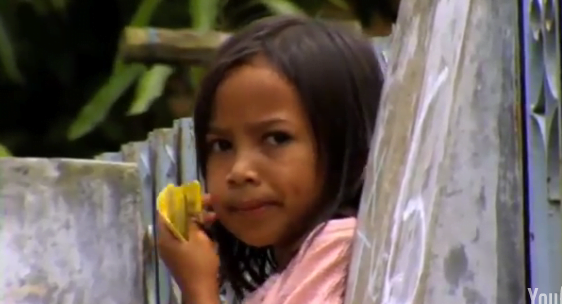Ed note. This is a special guest post from friend of Dispatch Anita Sharma. Anita is the Director of Millennium Development Goals Initiatives at the United Nations Foundation. Her work currently focuses around Every Women Every Child, the effort in support of the Global Strategy for Women’s and Children’s Health.
Last week, the Secretary-General went on a three-country visit to Asia that took him to Bangladesh, Thailand and Indonesia.
A key purpose of his visit was to showcase the progress and leadership of these countries in advancing women’s and children’s health in the context of the Every Woman Every Child effort.
Every Woman Every Child is an international, multi-stakeholder effort that aims to intensify and mobilize global action to improve women’s and children’s health. Launched by UN Secretary-General Ban Ki-moon during the United Nations Millennium Development Goals Summit in September 2010, the Every Woman Every Child effort puts into action the Global Strategy for Women’s and Children’s Health, which presents a roadmap on how to enhance financing, strengthen policy and improve service on the ground for the most vulnerable women and children. In this way, Every Woman Every Child aims to save the lives of 16 million women and children by 2015.
This is an ambitious goal, and some wonder if it is possible. We know that through increased financing, strengthened policies and improved service delivery, healthy women and children will drive global development, enhancing our success in achieving all Millennium Development Goals, or MDGs. But we all have a role to play. And we know from the Secretary-General’s travels last week that already, key actors have demonstrated great vision, commitment, and accountability in improving the health outcomes for women and children.
On Monday, Secretary-General Ban Ki-moon visited icddr,b, formerly the International Centre for Diarrheal Diseases in Bangladesh, a leading research institution that receives over 120,000 patients every year, two-thirds of whom are children, and educates mothers on how to produce low-cost high-nutrition food. There, he was able to interact with patients and staff as well as see demonstrations of icddr,b innovations like the Oral Rehydration Solution and the “blood mat” that alerts women of post-partum hemorrhage. Later, icddr,b committed to do even more to eliminate maternal mortality by reducing complications in delivery, particularly post-partum hemorrhaging, creating comprehensive emergency obstetric facilities, training obstetric, nursing, and hospital staff to support complicated deliveries, and providing training for midwives to improve the quality of home-based births.
Innovations like these, as well as far-reaching partnerships and an emphasis on accountability, are the cornerstones of Every Woman Every Child; new and game-changing commitments are crucial to our success to improve the health outcomes of millions. Excitingly, the Secretary-General’s visit to Bangladesh ended with the announcement of six new commitments made to Every Woman Every Child by a variety of key actors, including Abdul Monem Limited, icddr,b, TeleConsult Group, The A. K. Khan Healthcare Trust, The Bangladesh Women Chamber of Commerce and Industry, and The Viyellatex Group. GAIN enhanced their commitment and BRAC elaborated on theirs.
These most recent commitments join a list of 191 partners who have made 206 commitments to the Every Woman Every Child effort since it was launched in September 2010, including commitments by 67 governments, 16 philanthropic institutions and foundations, 14 UN multilateral organizations and partnerships, 58 non-governmental organizations, 23 members of the business community, and 10 academic and research institutions. That these come from such a wide range of actors is particularly significant. These pledges will ensure more health for the money, through better and more focused use of all available resources. They also represent more money for health, taking a major step towards filling the gap between the investment needed and what is currently provided for women’s and children’s health – with an estimated US$40 billion in funding already committed over the next five years.
This is an important start – but we have a long way to go to reach our goal of saving 16 million lives by 2015 and securing the well-being of every woman and every child. That is why, while we pause to look back at what has been achieved in the past year, we must also pick up the pace in addressing the tasks that remain.
Towards the end of his trip, the Secretary-General issued a rousing call to action at the Association of Southeast Asian Nations (ASEAN) Business and Investment Summit in Bali. In his remarks, the Secretary-General declared that “when women and children die needlessly from disease, or complications which can be prevented, it is a tragedy. It is a tragedy of the world because these deaths are easily preventable.” Calling it a “moral imperative” to address these issues, he asked the members of the summit to “lead by example” in improving the health and lives of the world’s most vulnerable.
As the Secretary-General’s trip demonstrated, many of our partners in Asia and around the world are heeding this call and leading by example in the fight to prevent the tragedy of preventable death and disease among women and children. We hope you will join us as we continue to sustain and mobilize this unprecedented global effort.
Visit everywomaneverychild.org to learn more.
